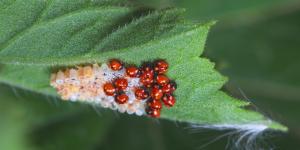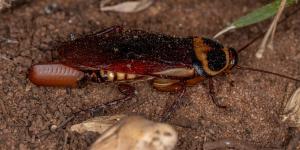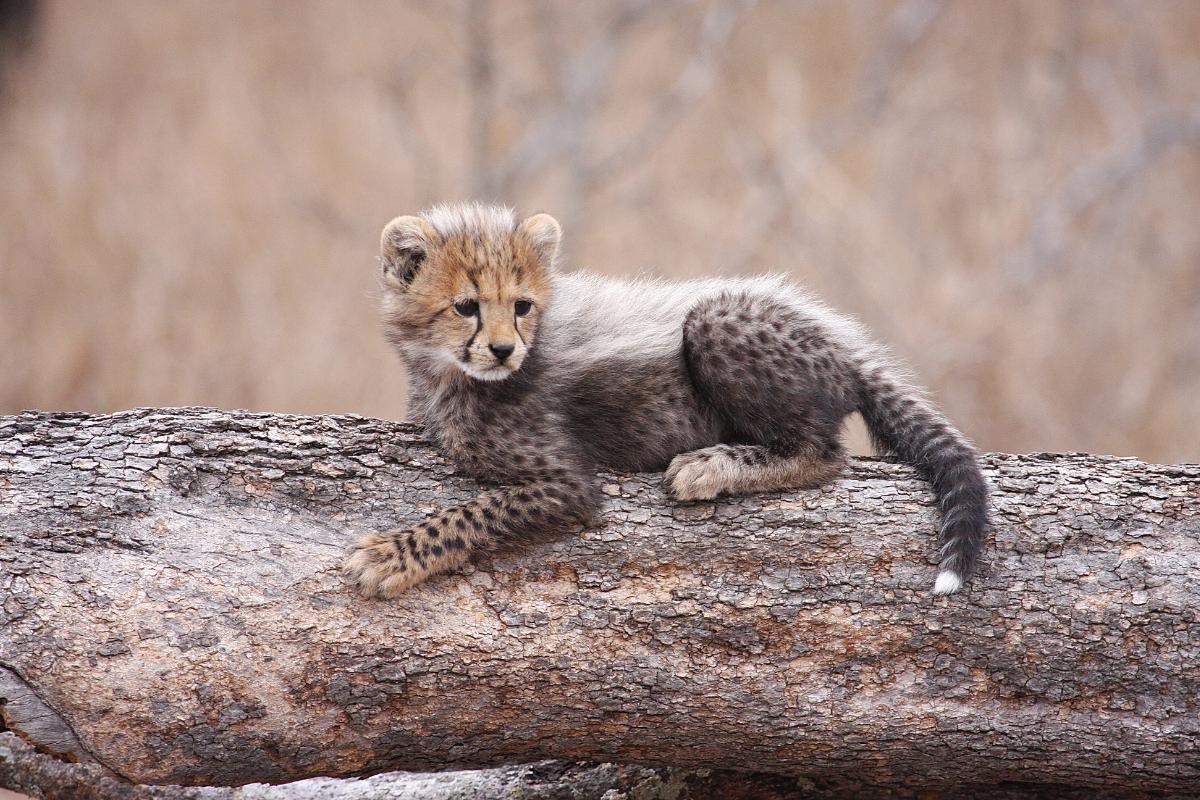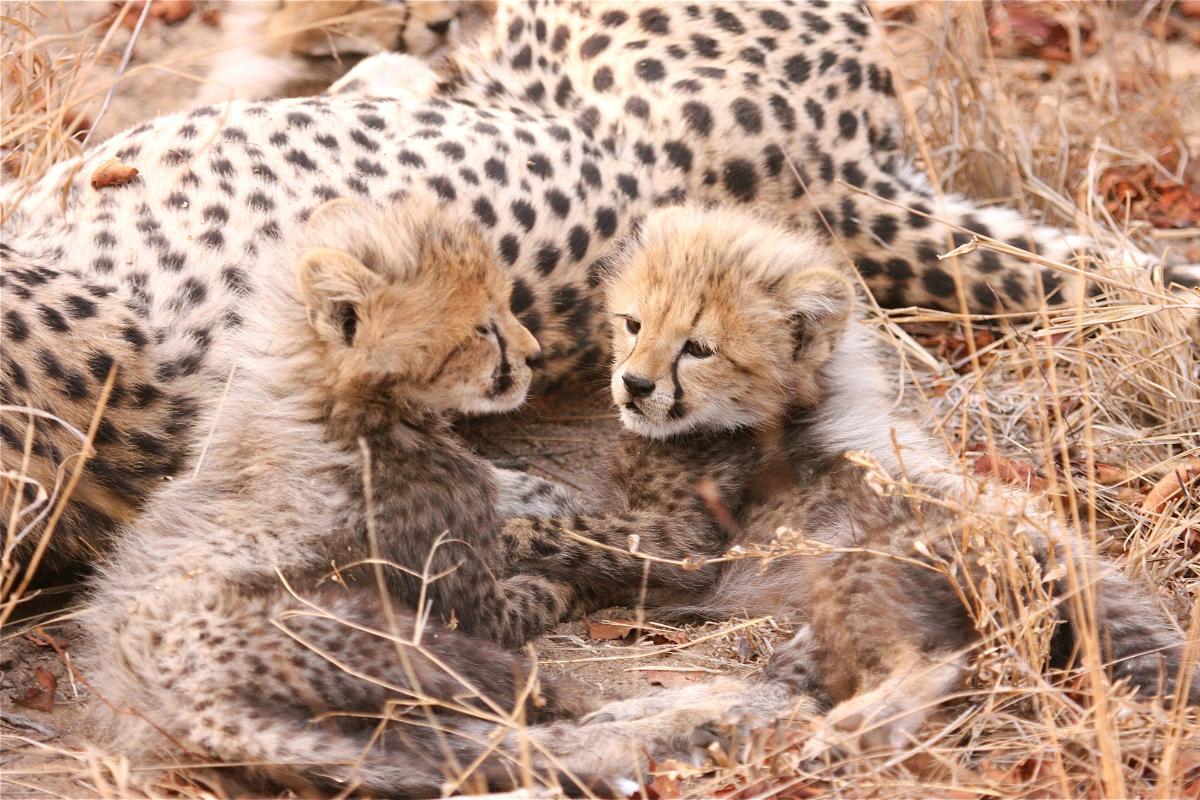How Do Cheetahs Reproduce?

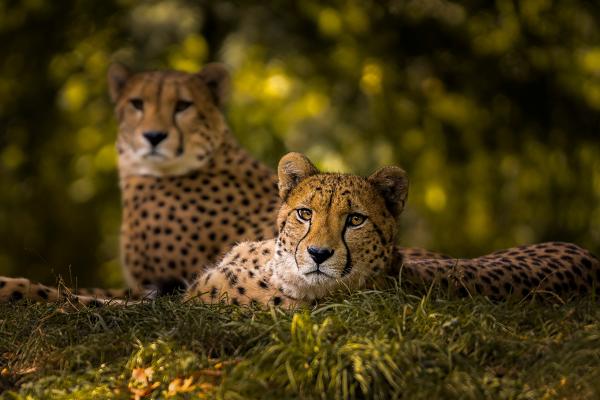
The survival of the cheetah, the world's fastest land animal, depends critically on successful reproduction. These large felines encounter unique reproductive hurdles, such as locating partners in divided habitats and nurturing their young in the unforgiving African wild. The reproduction of cheetahs is especially intriguing because it differs from that of other big cats. Cheetahs, unlike lions that live in prides and solitary tigers, have developed distinct reproductive strategies tailored to their unique evolutionary journey.
The following AnimalWised article explores how do cheetahs reproduce, how these solitary big cats find and choose mates, the intricacies of their pregnancy and birth process, and the critical period of cub development that follows.
How do cheetahs reproduce?
Cheetahs reproduce sexually through internal fertilization, requiring both a male and a female. This process can be broken down into four main phases:
- Courtship: males initiate courtship by approaching potentially receptive females and attempting to attract them with specific vocalizations and scent marking.
- Mating: if the female accepts the male's advances, mating occurs. This brief encounter results in internal fertilization, as the male's sperm fertilizes the female's eggs. The male's involvement in reproduction ends after mating.
- Gestation: the female then enters a gestation period, during which she carries the developing cubs internally. While pregnant, she continues to hunt and survive, though she requires increased food intake to support the growing cubs.
- Birth: prior to giving birth, the female seeks out a secluded location, often in tall grass or dense vegetation, where she delivers her litter.
This method of sexual reproduction is vital for cheetah survival. Because each cub inherits a unique combination of genes from both parents, it ensures genetic diversity within cheetah populations, contributing to the population's overall health and adaptability.
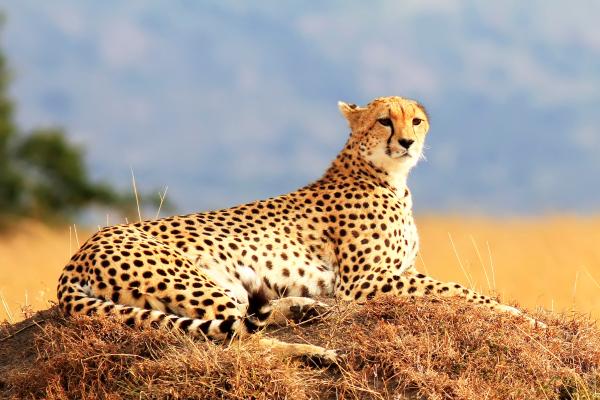
How do cheetahs choose their mates?
Cheetahs reach sexual maturity later than many other big cats, with females typically becoming reproductively active between 20-24 months of age. Males, however, usually take longer, reaching maturity between 24-36 months.
This delayed maturity serves an important biological purpose, guaranteeing that young cheetahs are equipped both physically and mentally for the challenging responsibilities of mating and, for females, rearing cubs. During this maturation period, young cheetahs develop the physical characteristics and social skills necessary for successful reproduction. Males, in particular, must build the strength and stamina required for the intense courtship process that lies ahead.
In the world of cheetahs, finding a mate is quite complicated. By nature, female cheetahs are solitary and maintain large home ranges that they mark with scent signals. When female animals become receptive to mating, they leave scent trails containing chemical signals that can be detected by potential partners over a wide area.
Male cheetahs use different mating strategies depending on their social structure. Some are solitary, while others form coalitions, usually composed of brothers from the same litter. These coalitions give them a significant advantage in acquiring and defending territories that females frequent.
Did you know that cheetahs and leopards have very different parenting styles? Learn more about what makes these spotted cats unique in our comparative guide.
How do cheetas mate?
Cheetah reproduction involves complex social and behavioral patterns, particularly centered around male competition and female choice.
Within cheetah coalitions, dominant males typically have priority access to breeding females. However, because evolution favors diverse reproductive strategies, subordinate males have developed alternative tactics to increase their chances of mating. These include patrolling territory borders, capitalizing on opportunities when dominant males are absent, using stealth, and maintaining larger home ranges. This variety of mating strategies helps maintain genetic diversity within cheetah populations, preventing genetic bottlenecks and promoting the species' long-term survival.
The actual mating process begins with courtship, where males initiate contact with potentially receptive females. During this phase, males employ multiple sensory signals to attract females, including distinctive vocalizations and scent marking. They also display specific behaviors such as head rubbing and following the female. If the female is receptive, she will show interest through her own behavioral cues.
When a female accepts a male's advances, mating occurs relatively quickly, typically lasting between a few minutes to an hour. This brief duration aligns with cheetahs' need to remain mobile for hunting and territorial defense.
Once internal fertilization occurs, the pair's interaction ends. Cheetahs do not form lasting pair bonds. The male departs, and the female assumes complete responsibility for the pregnancy and subsequent care of the offspring.
Understanding where cheetahs live is crucial to their reproductive success. Explore the natural habitats of these big cats in our in-depth article.
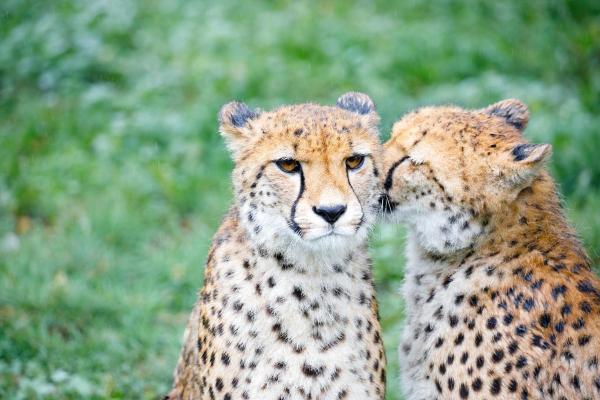
How are cheetahs born?
Once fertilization occurs, the female begins a gestation period of 90-95 days. During this crucial time, she demonstrates remarkable adaptability, modifying her behavior and hunting strategies to balance increased nutritional needs with physical safety.
The pregnant female typically separates herself from others, seeking isolation and suitable birthing locations. This solitary period is essential, as cheetahs do not share cub-rearing responsibilities with other group members.
As birth approaches, the female selects a carefully hidden location, typically in tall grass, dense vegetation, or other areas that offer protection from predators.
How many babies can a cheetah have?
The birthing process itself is relatively quick, with females typically producing litters of 3-6 cubs, though larger litters of up to eight have been documented.
A mother cheetah needs proper nutrition to raise her cubs successfully. Find out what these hunters eat in our detailed guide to cheetah diet.
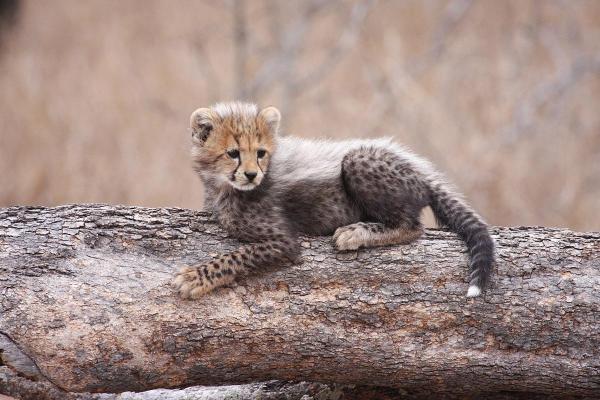
What do cheetah cubs look like?
Cheetah cubs begin life in an extremely vulnerable state, weighing just 200-300 grams and born blind. Their soft, grey coat with dark spots provides crucial camouflage in their natural environment. During this first week, cubs are entirely helpless, opening their eyes around day seven and beginning their first tentative crawling movements.
The mother maintains intense vigilance during this critical period, balancing hunting needs with offspring protection. She frequently relocates her cubs between den sites to prevent scent accumulation that could attract predators.
Between weeks 2-3, cubs make their first attempts at walking. By weeks 4-6, they begin following their mother for short distances, marking their first steps toward independence.
Around six weeks of age, cubs reach a significant milestone as they begin transitioning to solid food. While still dependent on their mother's milk, they start showing interest in meat and learning about food sources. This period marks the beginning of their journey toward hunting independence.
The extended learning period can be divided into two main stages:
- Early learning (months 3-6): cubs develop basic hunting skills through play and observation. They practice stalking, pouncing, and coordination through playful interactions with siblings and their environment.
- Advanced training (months 6-18): cubs gradually master more sophisticated hunting techniques. They learn to read prey behavior, coordinate with siblings, and perfect their chase strategies through supervised hunting attempts.
Unlike other big cats that live in prides, cheetah cubs rely exclusively on their mother for both protection and education. This intensive maternal care period, lasting 12-18 months, ensures cubs master not only hunting skills but also essential social behaviors crucial for their future survival and reproductive success.
Once cheetah cubs reach maturity, they leave their mothers. Males usually disperse to establish their own territories, either alone or by forming coalitions with other males. Females, on the other hand, often settle in areas that overlap with their mother's territory. This dispersal pattern helps maintain genetic diversity and a healthy distribution of the cheetah population.
Want to discover how cheetahs compare to other members of the cat family? Dive into our detailed exploration of the feline world.
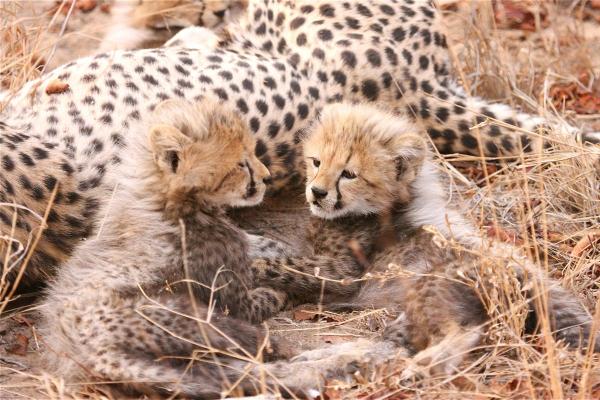
If you want to read similar articles to How Do Cheetahs Reproduce?, we recommend you visit our Facts about the animal kingdom category.
- Asa, CS, Junge, RE, Bircher, JS, Noble, GA, Sarri, KJ, & Plotka, ED (1992). Assessing reproductive cycles and pregnancy in cheetahs (Acinonyx jubatus) by vaginal cytology. Zoo Biology, 11(3), 139-151.
- Brown, JL, Wildt, DE, Wielebnowski, N., Goodrowe, KL, Graham, LH, Wells, S., & Howard, JG (1996). Reproductive activity in captive female cheetahs (Acinonyx jubatus) assessed by faecal steroids. Reproduction, 106(2), 337-346.
- Tommasi, A., Koziel, JA, Molotsi, AH, & Esposito, G. (2021). Understanding the Role of Semiochemicals on the Reproductive Behavior of Cheetahs (Acinonyx jubatus)—A Review. Animals, 11(11), 3140.
- Wielebnowski, NC, Ziegler, K., Wildt, DE, Lukas, J., & Brown, JL (2002, November). Impact of social management on reproductive, adrenal and behavioral activity in the cheetah (Acinonyx jubatus). In Animal Conservation forum (Vol. 5, No. 4, pp. 291-301). Cambridge University Press.


